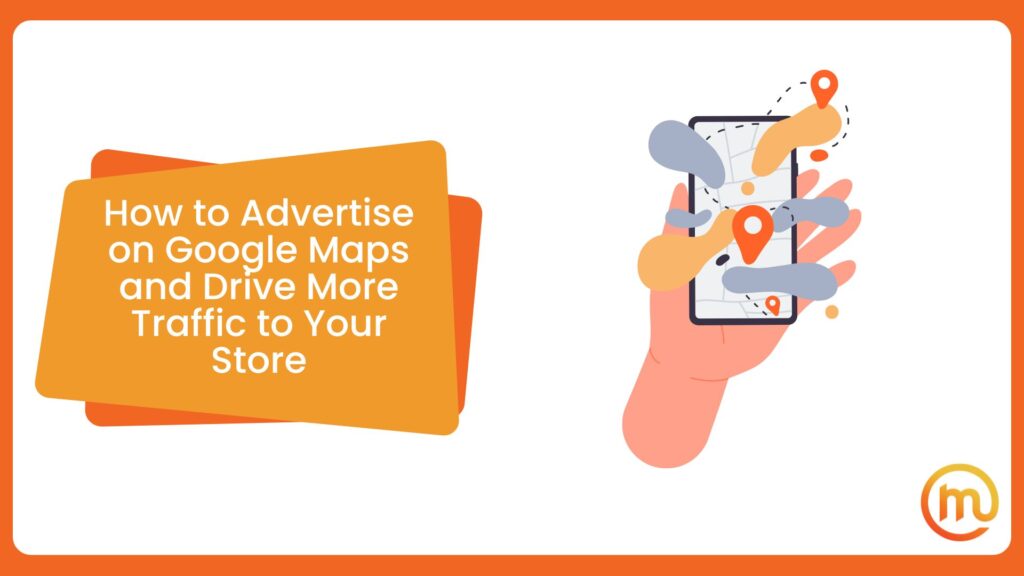You’ve probably heard it all before – digital marketing (in all its shapes and forms) can do wonders for your brick-and-mortar business. But what’s the main goal behind it? In essence, it’s to conquer the world’s most used search engine. So let’s talk shop – here’s how to advertise on Google Maps.
Did you know that over 80% of queries on desktop browsers go through Google’s search engine? On top of that, there are around 120 million so-called Local Guides on Google Maps who can help you when you’re traveling. This tells all business owners one important thing, and that being present on this advertising platform is a must. As we are an experienced advertising agency, we’ll share an in-depth how-to with you.
What Are Ads on Google Maps?
Google Maps ads are digital ads for Google Business profiles that show up in the Google Maps service. But to grasp ads on Google Maps better, you need to get to the bottom of local SEO marketing services and figure out how local search works. These ads effectively put your business on the map – quite literally.
What’s crucial for driving more local people to engage is to be better known locally, and running these types of ads is a smart way to go about it. A targeted ad that shows up in SERPs (Search Engine Results Pages) when someone searches for a company, service, or product with a physical location in a certain area is called a local search ad. The goal of these local search ads is to connect people to nearby establishments and get them to visit or buy something in person.

How Do They Work?
No matter the industry, a business won’t be able to advertise to its local community without one important platform, and that is Google Ads. Formerly known as Google AdWords, it’s an online advertising platform developed by Google, where advertisers bid to display brief advertisements. They can be service offers, product listings, or videos intended for web users.
To advertise on Google Maps, first, make sure your business is listed and verified as a Google Business Profile. Link this account to your Google Ads account and set up location extensions. Create a new ad campaign in Google Ads, choosing “Local store visits and promotions.”
Campaign Creation
All advertisers on this platform start the same way – by creating a campaign. To do it right, the campaign should be based on specific goals like generating website visits, increasing phone calls, or driving foot traffic. Choosing the type of campaign should also be based on the advertising goal.
Target Audience
Choosing the targets should be easy because you’re supposed to take into account several factors, such as keywords, demographics, location, and the type of device. This step will make sure the right audience is reached, and you’re not just shooting your shot in the dark. Remember, the audience is supposed to be interested in what the business offers.
Ad Auction
Every time someone conducts a search that matches the keywords you’ve bid on, Google runs an auction to determine which ads will be displayed. This part is tricky, as the search engine will determine the placement of ads based on the relevance of keywords and ad campaigns, as well as the amount of their bids.
Bid Strategy
As an advertiser, you get to choose from several bid strategies that align with your business goals. For example, there is cost-per-click (CPC) where you pay for each click on your ad, cost-per-mille (CPM), where you pay per thousand impressions, or cost-per-engagement (CPE).
Quality Score
There is one more factor this search engine uses to determine how your ad should rank, and it’s something called Quality Score. It’s a metric based on the overall quality of your ad. It includes the ad’s click-through rate (CTR), the relevance of each keyword to its ad group, landing page quality and relevance, and the past performance on the Search Network.
Ad Formats
Ads don’t have to be in a unified format, and you can create different versions that will appear across platforms, There are text ads that appear in search results, graphic display ads on websites, video ads on YouTube, or in-app ads on mobile devices.
Performance Measurement
Once the ads are running, Google Ads will provide detailed reports and insights that will show how these advertisements are performing. It will allow you to see metrics such as the number of clicks, impressions, click-through rates, conversion rates, and more.
Setting up Google Maps Ads
Many people view Google Maps simply as a tool for navigation. While that is true at its core, there are many advantages to this service for business owners. For establishments, it can prove to be a very valuable platform for gaining visibility in their locale. Here’s how to advertise on Google My Business in simple steps:
- First, you need a Google Business Profile account. If you don’t already have one, create it by going to the Google Business Profile website and following the instructions to register your business.
- After the registration process, verify your business to prove that you are the rightful owner or representative. Google may require you to verify by mail, phone, or email.
- Make sure that the provided business information is accurate and complete in the Google Business Profile. Include the business name, address, phone number, business hours, and photos. All this information will appear in ads.
- Now, to run ads, you need to link your Google Business Profile account with your Google Ads account. This can be done in the Google Ads interface under the “Extensions” tab where you can set up location extensions.
- Creating campaigns from there is simple – you should choose “Local store visits and promotions” as the goal in Google Ads. This is for driving more store traffic to a physical location. As an experienced agency, we advise this type of campaign as It’s optimized for local advertising.
- To set your budget, you will need to decide how much to spend daily. Google Ads works on a bidding system, so you will need to choose between paying for clicks, impressions, or conversions, depending on your goals.
- Targeting the right audience is as simple as choosing the geographic area where you want your ads to be shown.
- To create the ad itself, you will need to write its content. Make sure you highlight the key details about your business, such as your products or services. You can add extensions that show your business location directly on the map to make it easier for customers to find you.
- Once you’re certain it looks good, launch the campaign. Then, use Ads and Google Business Profile insights to see how many people are interacting with your ad and visiting your location.
Remember, it really doesn’t matter whether you’re a local photographer, you’ve set up a lovely rustic cafe, or you run a boutique for handmade accessories, Maps can significantly boost your local traffic.

What Are the Advantages of These Ads?
These types of advertisements are important because more and more people turn to online maps to get immediate answers to their shopping and service needs. If you act wisely and position your establishment on the map, it’s like placing it right in front of users who are actively searching for what you have to offer.
Ads on Google Maps are great for people who are often on the move and need directions quickly. You can easily attract these time-pressed customers and send them straight to your storefront by strategically placing your ad to appear at the top of their search results.
One of the most prominent perks of this type of advertising is that both Maps and Search start to feature your company more prominently. It means that your business will be more visible to potential clients when they search for similar items or services. In the end, it makes it more likely that they will choose to visit your location. Remember, building a stronger brand and attracting more customers are both essential for any business looking to expand.

Different Features of Advertisements
Google Maps ads have a lot of features that make them more visible and bring in potential customers right from their search results. Here’s a list of the different features that can help your business thrive:
- Promoted pins. These pins are customized, and unlike other pins on the Maps, they are often larger and possibly include a business logo.
- In-map ads. They will appear directly on the map while users search for locations.
- Local search ads. Once someone searches for a related service or a product near them, these ads will pop up.
- Place page ads. When someone clicks on your ad pin, they are taken to a detailed place page. It can include your business address, phone number, photos, reviews, and other essential details.
- Navigation ads. These ads pop up during the navigation process in Google Maps. Your advertisement can appear when a user is en route to a nearby destination, and the ad will suggest they stop by your business along the way.
- Call and directions button. The featured direct call and directions buttons are among the most actionable features of Google Maps ads. This means that with one tap, a potential customer can either call your business or get driving directions to your location.
- Local finder. When a user clicks or taps on more places from the ads in search results, they are taken to the “Local Finder” view. It provides further information about your business and others in the area.
Each of these features is designed to make the business more accessible and noticeable to potential customers.

Take Your Business to the Next Level With The Best Agency
Wondering if it takes more than pointing out your business is right to some popular local landmarks to be seen? Placing your establishment on the Maps is the way to go, so don’t miss out on the opportunity to make your business stand out in local searches. In fact, over 84% of companies plan to use this way to advertise their business in 2024, so they must be on to something.
If you’re ready to enhance your visibility on Maps and attract more local customers, contact Made Online today. As a professional SEO agency, we specialize in optimizing your local search presence. We will make sure that your business is not only seen but picked among many. Reach out to us, and let’s put your business on the map together for easier customer navigation.

